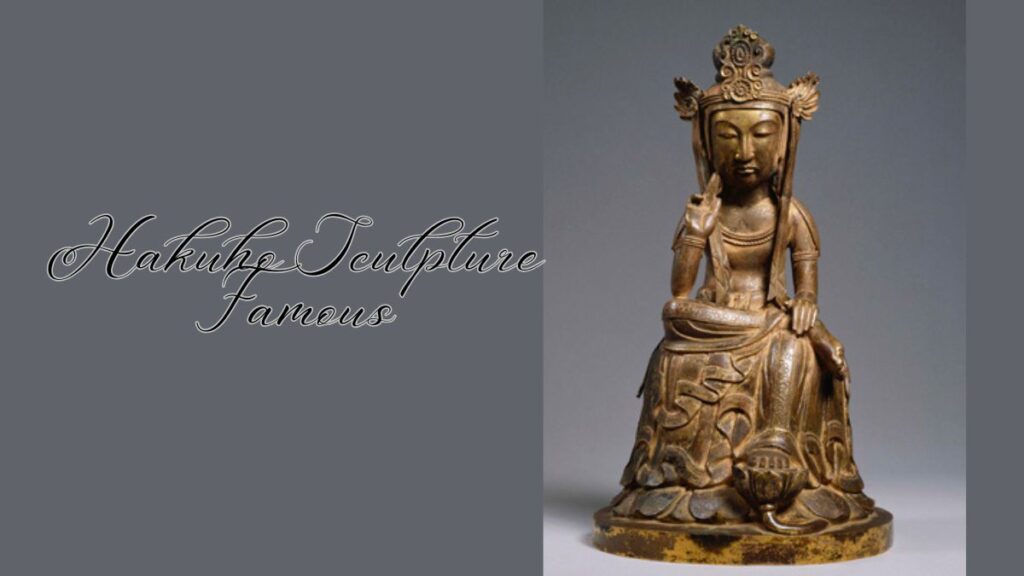The Hakuho Sculpture Famous (645–710 CE) marks a transformative era in Japanese art, particularly in the realm of sculpture. This epoch witnessed the creation of iconic Buddhist statues that seamlessly blend indigenous Japanese aesthetics with continental influences, leaving an indelible mark on the cultural and religious landscape of Japan.
Historical Context of the Hakuho Period
Following the Taika Reforms of 645 CE, Japan underwent significant political and cultural transformations aimed at centralizing imperial power. This period also saw the flourishing of Buddhism, which had been introduced to Japan in the mid-6th century. The convergence of these factors created a fertile environment for artistic expression, particularly in the creation of Buddhist sculptures.
Characteristics of Hakuho Sculpture
Hakuho sculptures are renowned for their graceful forms, serene expressions, and intricate details. Artists of this period employed materials such as wood, bronze, and clay, often adorned with polychrome finishes and gold leaf to enhance the spiritual presence of the figures. The sculptures exhibit a harmonious blend of realism and stylization, reflecting both native sensibilities and the assimilation of continental artistic traditions.
Notable Hakuho Sculptures
- Yakushi Triad at Yakushi-ji Temple: This bronze ensemble features the Yakushi Buddha flanked by two attendants, Nikkō and Gakkō. The figures are characterized by full, fleshy forms, reflecting the influence of early Tang Chinese sculpture.
- Miroku Bosatsu at Chūgū-ji Temple: This contemplative Bodhisattva, seated with one leg crossed and a finger gently touching the cheek, embodies a sense of introspective tranquility, showcasing the refined carving techniques of the era.
- Hakuho Butsu: A Buddhist statue from the Hakuho period, exemplifying the artistic style and religious devotion of the time.
Comparison of Notable Hakuho Sculptures
To better understand the distinguishing features of these masterpieces, let’s compare them based on key attributes:
| Sculpture | Material | Distinctive Features | Cultural Significance |
| Yakushi Triad | Bronze | Full, fleshy forms; influence of early Tang Chinese sculpture | Represents the healing Buddha; reflects the assimilation of continental artistic styles |
| Miroku Bosatsu | Wood | Contemplative pose; serene expression; refined carving techniques | Embodies introspective tranquility; showcases the unique personality of Hakuho Buddhist statues |
| Hakuho Butsu | Wood | Exemplifies Hakuho artistic style; religious devotion | Reflects the artistic and religious fervor of the Hakuho period |
Influences and Evolution
The Hakuho period was a melting pot of cultural influences. The Silk Road facilitated the exchange of artistic ideas, introducing elements from Chinese, Korean, and Central Asian art into Japan. This cross-cultural interaction led to the development of a distinctive Japanese style that harmonized foreign techniques with local traditions.
Preservation and Legacy
Many Hakuho sculptures have been preserved in temples such as Yakushi-ji and Chūgū-ji, offering invaluable insights into early Japanese religious art. These masterpieces continue to inspire contemporary artists and are celebrated for their historical significance and artistic excellence.
Conclusion
The Hakuho period’s sculptures stand as a testament to Japan’s early artistic endeavors and its capacity to assimilate and transform diverse influences into a unique cultural expression. These works remain enduring symbols of spiritual and artistic achievement, reflecting a pivotal moment in the nation’s history.







